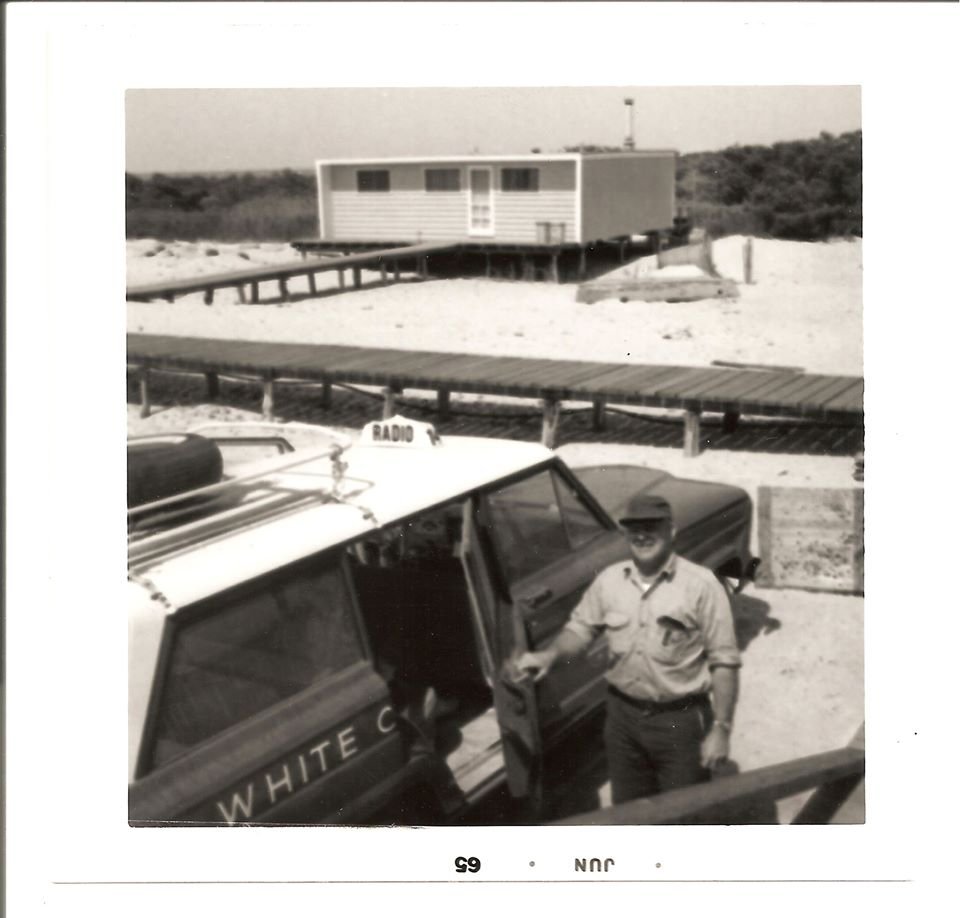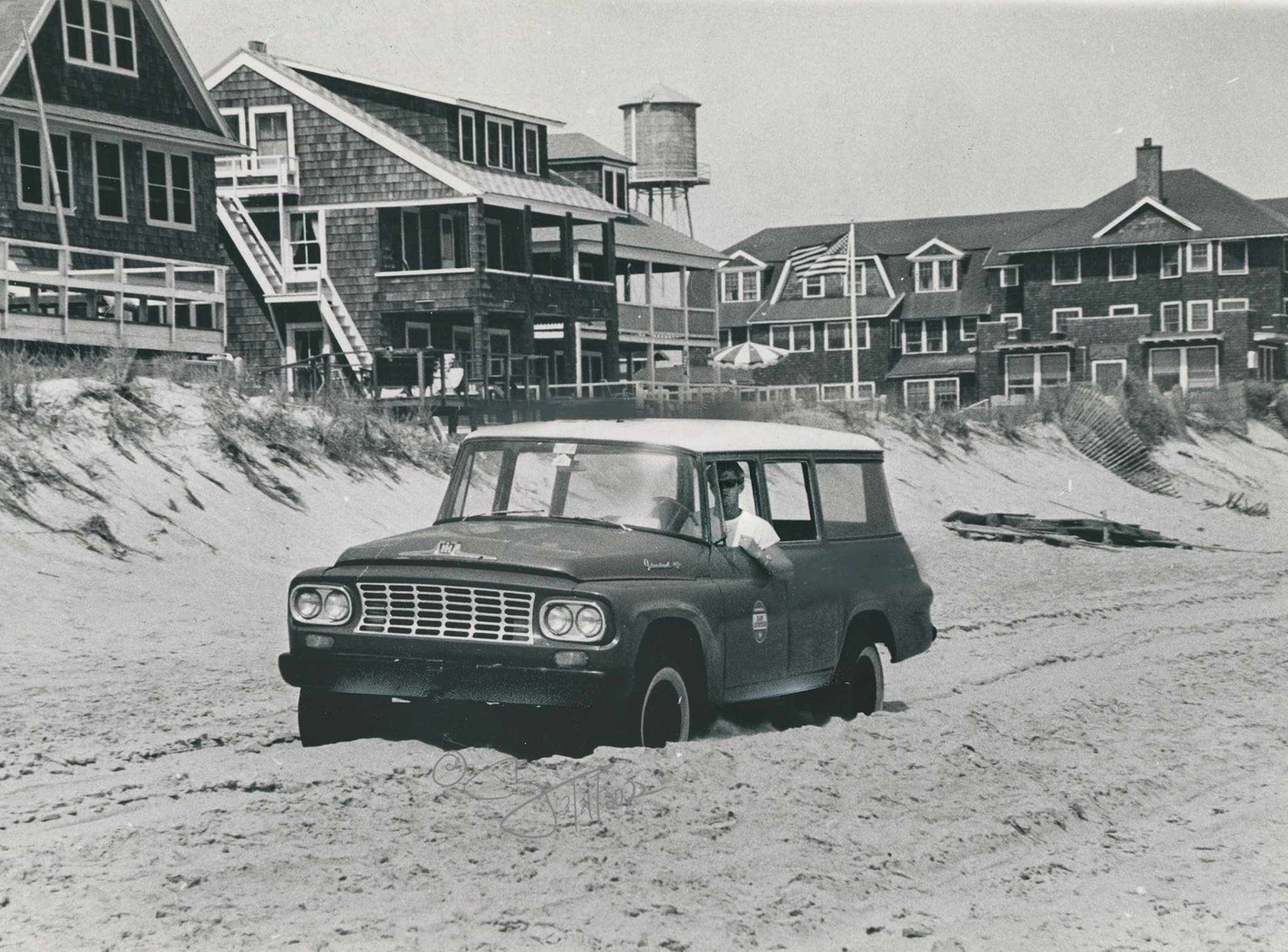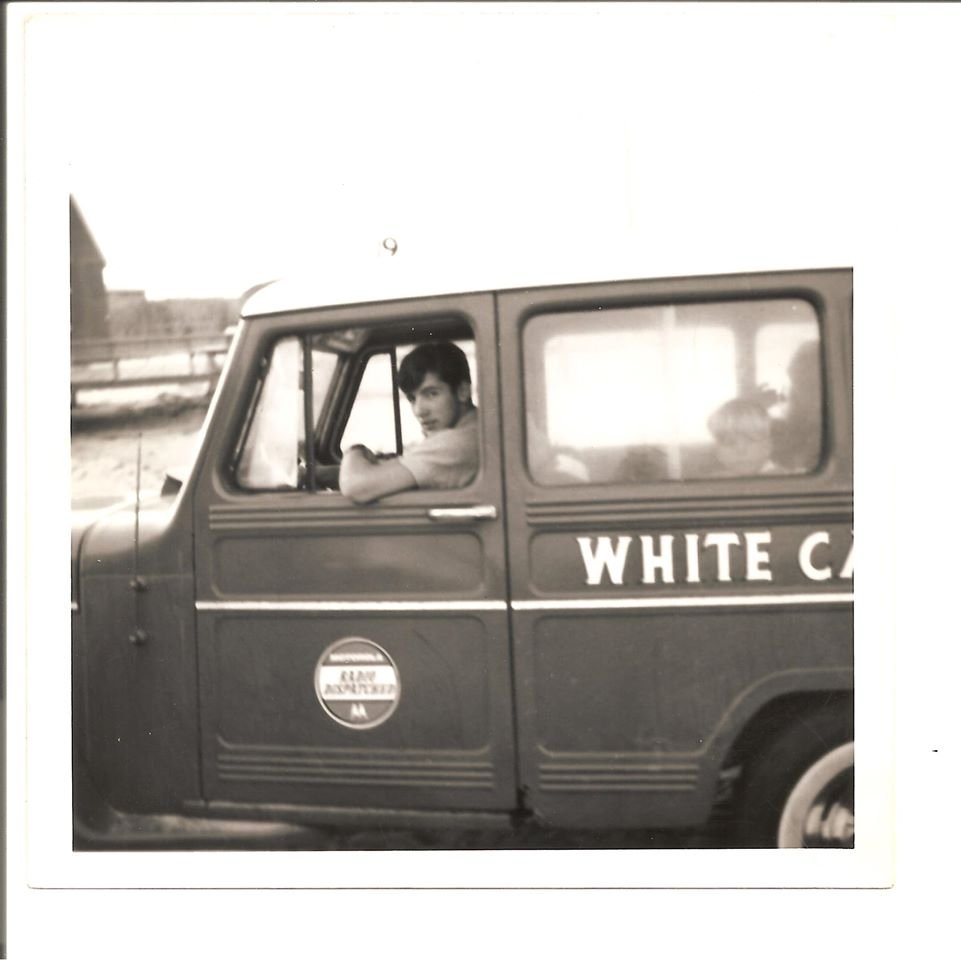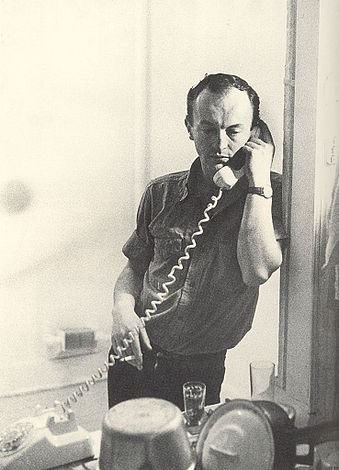The Fire Island Beach Taxi
Before the Water Taxi on Fire Island there was the Beach Taxi. On the deserted beaches of the growing communities the rebuilt truck or utility vehicle would take people to church, the general store or from one community to another. Longtime Pines resident Walter Reich was one of the first to run a Taxi service with his brother using a converted flat bed.
Another was White Cap Beach Taxi created by Everett Woodall Wright and his brother in law Roger Miskosky. During the 1940’s they would give people a lift in their 1929 Model A. In 1948 Everett started working at the Casino in Davis Park, and eventually became the manager. A position he maintained until he retired in 1978.
By 1950 the two men were meeting ferries at the Pines and Davis Park where they could pull up to the dock. They lines up homeowners who rapidly came to depend on them, as they took them to their homes at Deep Creek ( now Watch Hill) and Skunk Hollow (now Whale House Point Bellport.) White Cap Taxis prospered. They hauled groceries, plants, lumber, and furniture. They took people to church in Ocean Beach and Davis Park. They took sick people to the doctor in Cherry Grove or Ocean Beach. They were there for Fires and hurricanes alerting people up and down the beach. Flat tires were a common occurrence on the beach with driftwood with nails so spares were ready and waiting. They would split the maintenance by taking seven each to repair bringing them back like new in the spring.
Before the Smith Point bridge was built in 1958 the taxis were ferried over by barge from Patchogue, and all but one would come back for winter. They left one for fishing and deer hunting. The fleet grew and four wheel jeeps and international station wagons were added.
Clern LaFountaine
At its height White Cap ran seventeen taxis. Both men were proud of the young men they helped put through college. Longtime resident Clern LaFountaine drove in his younger years. Drivers kept 40% and the company got 60%. There was only one female driver.

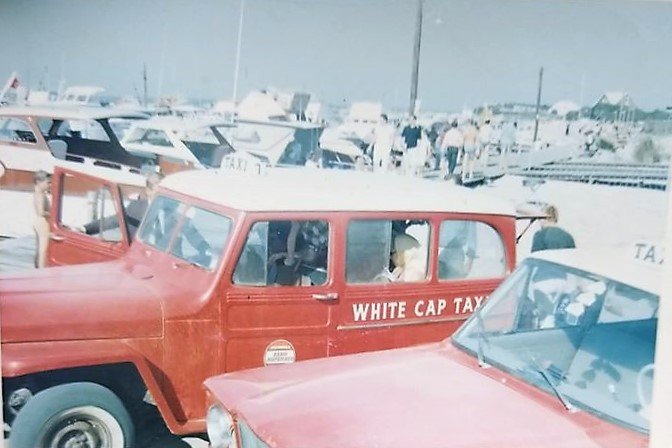
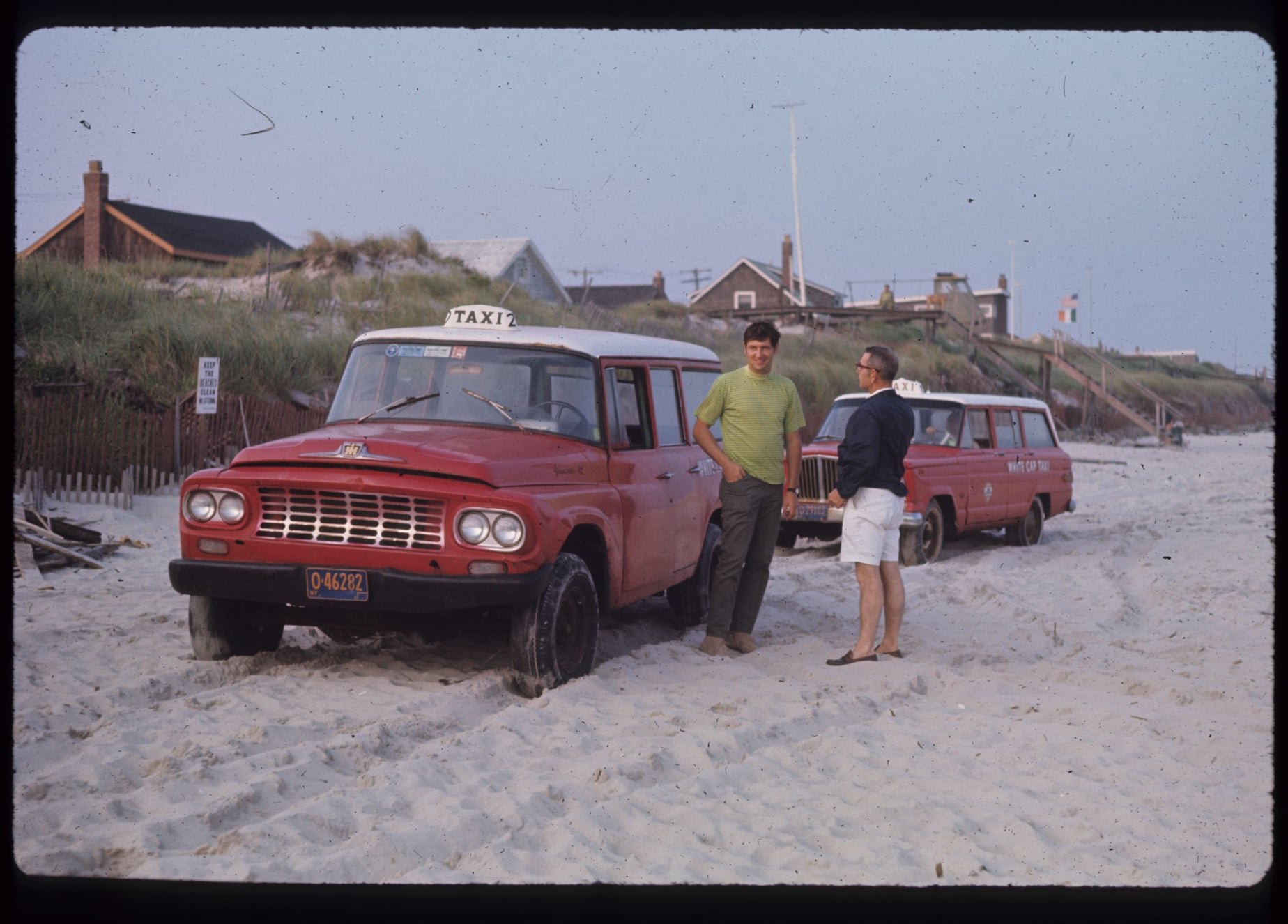
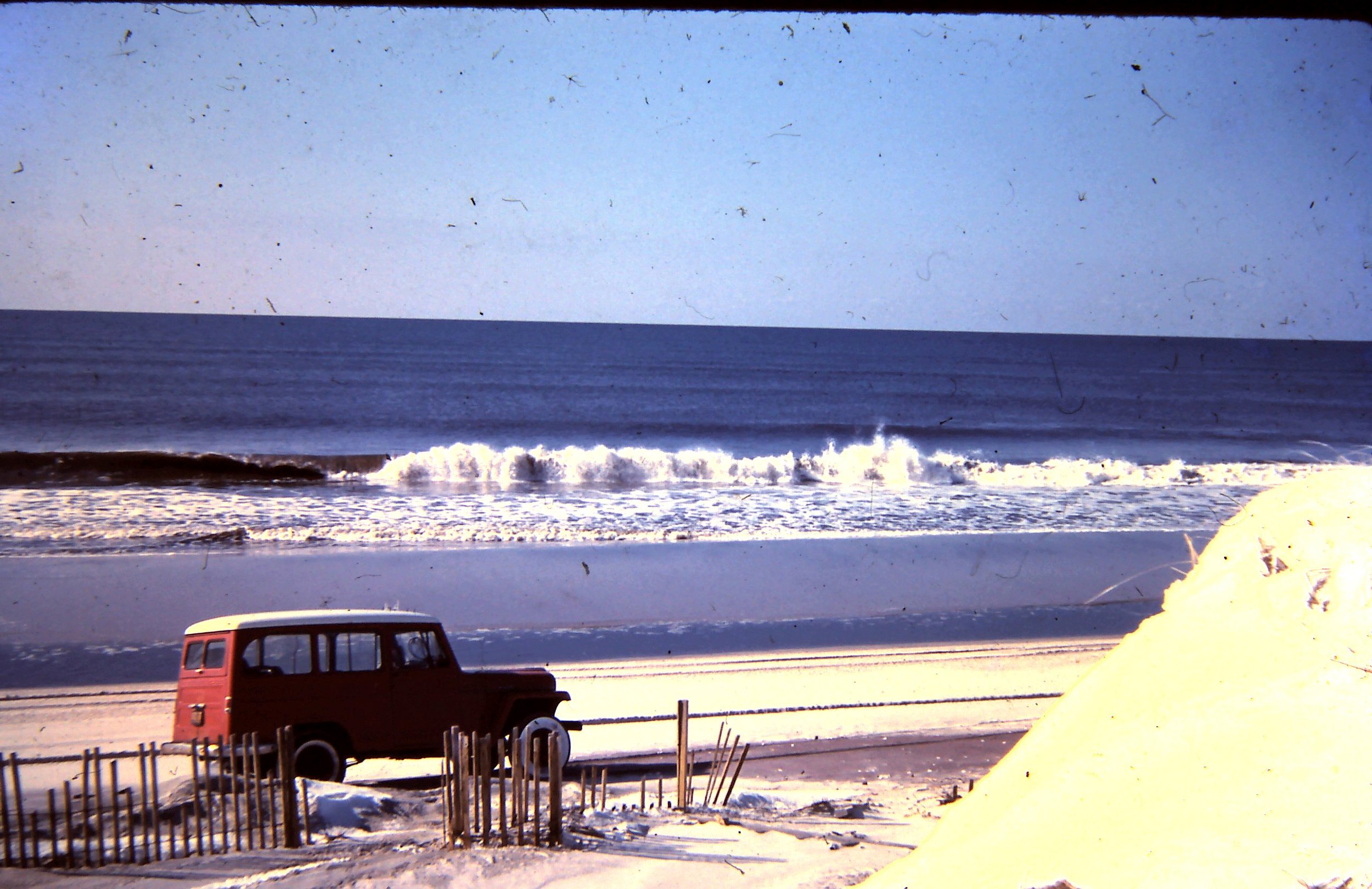
In 1963 the National Seashore took over the administration of Ocean Beach, limitations began to be imposed. They were told they couldn’t go to Ocean Beach so they began to cut the fleet. The beach got very popular in the sixties making driving on the weekends difficult, and the amount of people made driving unsafe. They only ran early mornings and night.
In the early morning hours of July 24, 1966, poet Frank O’Hara was struck by a jeep on the beach, after the beach taxi in which he had been riding with a group of friends broke down in the dark. He died the next day of a ruptured liver.
The Seashore was leaning on them checking on the amount of passengers to twelve. In the old days they would take as many as twenty in the International wagons. No one minded as it was a rustic time that felt like the old wild west.
In 1972 the FI National Seashore banned vehicles at Cherry Grove and the Pines. White Caps area of operations dwindled to the outlying areas of the eastern end of the Island. The drivers dwindled back to the original two. By 1978 the Seashore phased them out, and although many thought they had made a fortune, they had not. They retired with their memories of a simpler time in Fire Island history, and of the people who’s lives they made a difference in…


